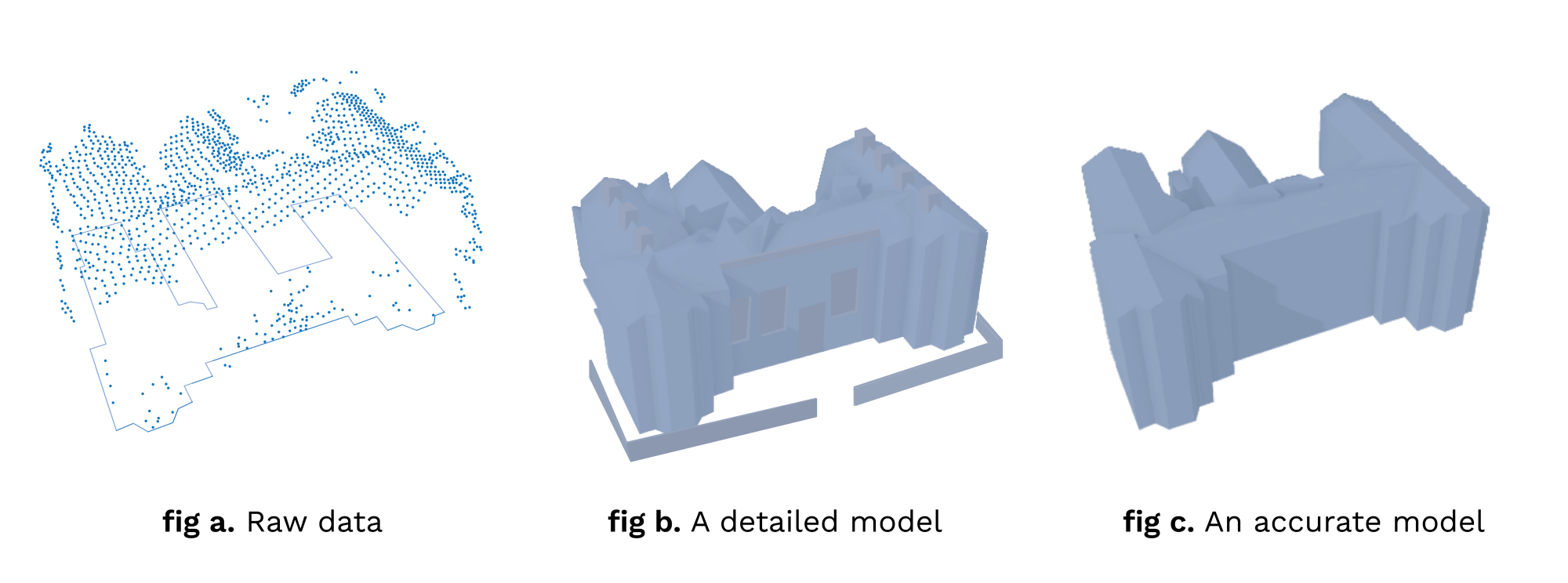Understanding the differences and tradeoffs between accuracy and level of detail when building models is crucial for design and decision-making. This distinction impacts everything from how you approach a project to the tools you choose to use.

Accuracy vs. Detail: A Common Misconception
One of the most frequent questions we hear from potential customers is: “How accurate are your models?” However, after some discussion, it often becomes clear that what they really mean is: “How detailed are your models?”
At first glance, these questions might seem interchangeable, and it’s easy to see why. However, when comparing Cetopo to competitors like Z-Mapping or Vu.City, the distinction between accuracy and detail makes all the difference. Let’s break it down.
What Do We Mean by Accuracy?
Accuracy refers to how closely a model aligns with actual, measurable data. Simply put, it’s a measure of how “correct” the model is. At Cetopo, we prioritise creating models that are as close to reality as possible, without introducing details that may be speculative.
For example, based on the LIDAR data we use:
- An accurate model might resemble Figure A, where the information closely matches the data source.
- A detailed model, on the other hand, might look like Figure B, with added elements that may or may not reflect reality.
While the detailed model may appear more impressive at a glance, it’s important to recognise that accuracy—staying true to the original data—is often more critical.

What Do We Mean by Detail?
Level of Detail (LOD) refers to the amount of information included in a model. This could mean representing intricate features such as window recesses, parapet details, or an increased number of contour lines.
In Building Information Modeling (BIM), there’s often a tradeoff between detail and accuracy. When the source data lacks certain specifics, adding detail often requires a degree of guesswork. This can result in a model that looks visually compelling but may not accurately represent reality.
For example:
- A model with detailed window sills might look polished but could be misleading if the data used to create it wasn’t precise.
What Determines Accuracy?
Accuracy depends on the quality of the data source and the methods used to transform that data into a model. All data sources come with a degree of tolerance, but some methods are inherently more reliable than others.
- Comparing Data Sources:
Photogrammetry: While useful in some scenarios, this method relies heavily on estimations to fill in gaps when converting photographs into 3D models. This can lead to inaccuracies, particularly with vertical measurements, where terrain models might be off by up to a meter. - LIDAR: LIDAR technology, on the other hand, captures data with fewer gaps, reducing the need for guesswork. This makes it a more accurate option for terrain and site modeling.
Both methods have their strengths, but understanding their limitations helps you choose the right one for your needs.

What Should You Prioritise?
The answer depends on how you plan to use the model.
For Site Analysis and Accurate Design Context: Cetopo’s models focus on accuracy while maintaining a lower level of detail. This makes them ideal for understanding site levels and the broader context of a project. Lower detail ensures the models run efficiently in AEC software, allowing you to work seamlessly with the full site view in mind—perfect for ensuring your designs integrate smoothly with their surroundings.
For Photorealistic Renderings: If your primary goal is to create highly detailed, photorealistic renderings, you’ll need models with a higher LOD. However, keep in mind that these often require assumptions about missing data, which may compromise accuracy.
Summary
When choosing between accuracy and detail, it’s not about which is “better” but rather which aligns with your project’s goals. At Cetopo, we emphasize accuracy because it ensures reliable results and helps you build with confidence. Whether you’re evaluating terrain, planning site layouts, or ensuring designs fit their context, accurate models provide the foundation you need to succeed.
By understanding the tradeoffs, you can make informed decisions and choose the right models for your specific needs.


